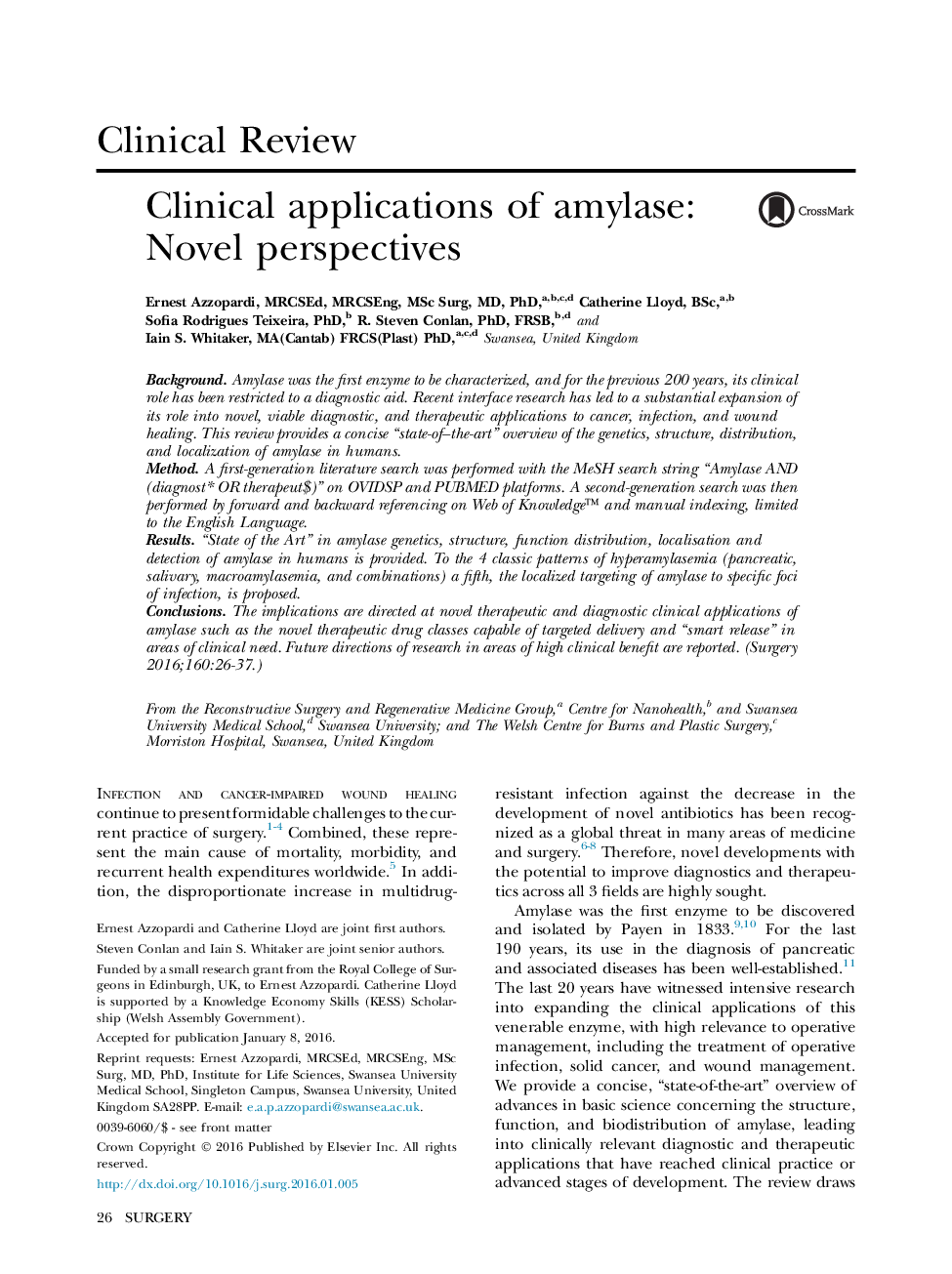| Article ID | Journal | Published Year | Pages | File Type |
|---|---|---|---|---|
| 6254749 | Surgery | 2016 | 12 Pages |
BackgroundAmylase was the first enzyme to be characterized, and for the previous 200 years, its clinical role has been restricted to a diagnostic aid. Recent interface research has led to a substantial expansion of its role into novel, viable diagnostic, and therapeutic applications to cancer, infection, and wound healing. This review provides a concise “state-of-the-art” overview of the genetics, structure, distribution, and localization of amylase in humans.MethodA first-generation literature search was performed with the MeSH search string “Amylase AND (diagnostâ OR therapeut$)” on OVIDSP and PUBMED platforms. A second-generation search was then performed by forward and backward referencing on Web of Knowledge⢠and manual indexing, limited to the English Language.Results“State of the Art” in amylase genetics, structure, function distribution, localisation and detection of amylase in humans is provided. To the 4 classic patterns of hyperamylasemia (pancreatic, salivary, macroamylasemia, and combinations) a fifth, the localized targeting of amylase to specific foci of infection, is proposed.ConclusionsThe implications are directed at novel therapeutic and diagnostic clinical applications of amylase such as the novel therapeutic drug classes capable of targeted delivery and “smart release” in areas of clinical need. Future directions of research in areas of high clinical benefit are reported.
